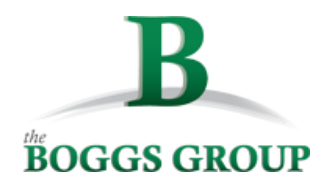Life Insurance Glossary
A
Advanced Premium: Pre-paid premium payment made before it’s due. The money is typically held in an account by the insurance company and then paid to the policy when the premium is due.
Amount of Insurance: Amount of coverage purchased. Also known as a face amount.
Annual Renewable Term: A form of term life insurance that automatically renews on a yearly basis with increasing premiums.
Application: Statement of information you provide to insurer used by the company to assess your risk. Along with other underwriting factors, determines your underwriting classification, premium, and eligibility.
B
Beneficiary: Person(s) or entity named in the life insurance policy that receives the death benefit upon the death of the insured.
C
Cash Value: The amount of money that accumulates in a permanent life insurance policy from which a loan or partial surrender can be made (unpaid loans and any accrued interest may affect the death benefit).
Cash Surrender Value: Amount of money the insurance company pays you when you voluntarily terminate the policy before your death or before the policy matures.
Conversion: When all or some of your term life insurance is exchanged into a permanent life insurance policy.
D
Death Benefit: Amount of money paid to the beneficiary upon the death of the insured.
Direct Response: When insurance is sold directly to you by an insurance company via phone, mail, or the Internet.
Dividend: Portion of a company’s profits that may be paid to policyholders in conjunction with a life insurance policy (typically whole life policies). Dividends are a partial return of premium and are not guaranteed.
E
Endorsement: Add-on coverage to your life insurance policy that provides additional benefits or exclusion; may require additional premium (also known as a rider).
Extended Term Insurance: If you fail to pay your premiums, an insurance company can take the cash value in your policy and use it to purchase term insurance. You would then be covered for a specific amount of time depending on how much your cash value was at the time of forfeiture (only available on whole life policies).
F
Face Amount: The amount of coverage purchased (also known as amount of insurance).
Final Expenses: Expenses incurred at the time of a person’s death, including funeral costs, current bills or debt. Life insurance can help cover final expense costs.
G
Grace Period: Amount of time after the premium due date when a premium payment can be made without the insurance policy lapsing.
I
Illustration: Hypothetical representation of how a company computes policy results.
Insured: Person(s) covered under the life insurance policy.
L
LIFE INSURANCE GLOSSARY
Lapse: When a life insurance policy becomes inactive due to non-payment of premiums.
Life Expectancy: The age a person is expected to live. Life expectancy is considered when determining the premium.
Life Insurance: A contract with an insurance company that, in exchange for premium payments, provides a sum of money, known as a death benefit, to beneficiaries upon the insured’s death.
Limited Pay: A type of whole life insurance, where premiums are paid only for a limited number of years; coverage still lasts a lifetime (if no loans are unpaid).
N
Non-Forfeiture Options: A policy provision specifying how the policy cash value can be applied if the policy owner stops making payments.
P
Paid-up Insurance: Amount of permanent life insurance available with no premium payments due after the cash value accrues enough to cover the premium payments.
Participating vs. Non-Participating Policy: A participating policy is a policy that can receive dividends from a life insurance company. A non-participating policy does not receive dividends.
Policy: The contract between the insurance policy owner and the insurance company.
Policy Loan: A loan issued by the life insurance company using the cash value of a life insurance policy as collateral. Loans are charged an interest rate and outstanding loans or unpaid interest may affect the death benefit. Failure to pay the loan balance could result in policy termination.
Policy Owner: The person who owns the insurance policy (also known as the policyholder).
Premium: The periodic payment you make to your insurance company to keep the policy active.
R
Reinstatement: The ability to re-activate your life insurance policy after it has lapsed (subject to review and approval).
Rider: Add-on coverage to your life insurance policy that provides additional benefits or exclusions. A rider may require additional premium (also known as an endorsement).
S
Settlement Options: How the death benefit is paid to the beneficiaries; usually in a lump sum but can also be paid in installments.
Standard Risk: A risk the life insurance company considers common or normal which would qualify you for a standard rate.
Surrender: A full cancellation of your insurance policy.
T
Term Life Insurance: Provides coverage for a certain time period (or term) such as 10, 20 or 30 years. The death benefit is be paid to the beneficiary(ies) if you die during the term.
U
Underwriter: Person who evaluates you for potential risks in order to determine the risk classification and whether or not to insure you.
Underwriting: Process used to assess your eligibility to purchase insurance and your risk classification.
Underwriting Class: The category you’re placed into based on your risk. The underwriting rating class/category impacts your premium (also known as rating or risk classification).
Universal Life Insurance: Long-term life insurance that offers flexible payments, an adjustable death benefit, and the cash value element of whole life insurance.
W
Whole Life Insurance: Permanent coverage that has fixed premiums, a fixed death benefit, and guaranteed cash value. Policy may receive dividends.

